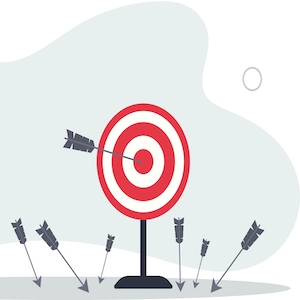By Dr. Ken Broda-Bahm:

With the news world still abuzz with implications of former President Trump’s 34 felony convictions and impending sentencing in New York, we are left to wonder about the effectiveness of defense attorney Todd Blanche’s closing argument focused on “ten reasons for reasonable doubt.” Some of those reasons had undeniable merit, like calling key witness Michael Cohen the “human embodiment of reasonable doubt.” Other reasons on the list, however, were less compelling and memorable, and commentators noted that some seemed fairly sketchy. For example, the first reason Mr. Blanche offered was the fact that Cohen created the invoices himself. An additional consideration was that the subject of another of Trump’s alleged liaisons, Karen McDougal, was initially reluctant to tell her story. The possibility that such reasons might have been greeted with a collective “so what?” suggests that the defense may have been better off with a smaller list focusing on just the better reasons.
While lawyers enjoy offering lots of reasons, there is a social science case to be made for offering fewer. Research shows that when it comes to offering rules and instructions (Mitkov & Štajner, 2014), a short and simple list is more likely to be understood and used. When it comes to motivating individuals to fill their bank savings accounts (Soman & Zhao, 2011), having one goal leads to better behavior than having multiple goals. When individuals are judging the quality of an Image (Leisti et al., 2022), a focus on fewer subjective reasons leads to a greater overall preference. In other words, humans prefer simplicity and too many options can reduce our confidence in a decision. In this post, I will take a look at the reasons lawyers might have a tendency to like long lists of reasons, and why juries might prefer a shorter list with fewer, and better, reasons.
Why Lawyers Like Lots of Reasons
From law school, and even earlier, future lawyers are trained to be analytic, with their logical and creative minds focused on multiplying and maximizing the reasons for any given proposition. If three reasons are good, six reasons must be twice as good. If every rationale is seen as a ticket that might win you the overall contest, then you’re going to want as many tickets as you can get. There is a similar mindset at work in the fast-speaking world of academic debate, a common training ground for future lawyers, where the practice is to offer as many reasons as possible in the hope that your adversary will miss one or two. Considered individually, a given reason might not be fully compelling, but if there is a chance that one person might buy it, and if you have time, then the thinking goes, why not offer it?
The justification is that a focus on greater quantity combined with a tendency for the average quality to decline a bit as the quantity increases, means that a ‘more reasons the better’ approach does not translate well to the real-world of legal persuasion.
Why Fewer Is Often Better
A smaller list of reasons will often fare better for just a few reasons. The most basic one is that reasons aren’t just passively collected, accepted, and placed on one side of a decision-maker’s scales. Instead, they’re processed and internally answered. Reasons invite counterargument, and for the reasons that don’t land as well, there’s always the chance that the counterargument will result in a net reduction in support for your side.
There is also what I’d call an “averaging effect,” where listeners remember the general perceived caliber of your case, which means that adding a weaker reason to a list of strong reasons will make your argument seem less strong on balance. A final way to look at it is just to consider your credibility, and the possibility that what jurors might remember is your weakest argument. A reason that doesn’t work isn’t just a factor that fails to help you, it is a factor that hurts you.
Lawyers should continue to use their analytical minds to multiply the reasons for and against the claims they’re supporting and countering. But before actually using all those reasons, remind yourself that the final case ought to be simple and powerful. More is not always better. Ultimately, every reason you offer should be one that makes sense, adds credibility, and stands on its own as part of a short and clear list.
____________________
Other Posts on Audience Adaptation:
- Speak to Familiarity: Jurors Know What They Like, and Like What They Know
- Give the Jurors What They Want: 10 Golden Rules
- Don’t Ask Your Audience to Follow Substructure: Five Reasons Flat Structure Is Better
____________________
Leisti, T., Vaahteranoksa, M., Olives, J. L., Peltoketo, V. T., & Häkkinen, J. (2022). The Fewer Reasons, the More You Like It! How Decision-Making Heuristics of Image Quality Estimation Exploit the Content of Subjective Experience. Frontiers in Psychology, 13, 867874.
Mitkov, R., & Štajner, S. (2014, August). The fewer, the better? A contrastive study about ways to simplify. In Proceedings of the Workshop on Automatic Text Simplification-Methods and Applications in the Multilingual Society (ATS-MA 2014) (pp. 30-40).
Soman, D., & Zhao, M. (2011). The fewer the better: Number of goals and savings behavior. Journal of Marketing Research, 48(6), 944-957.